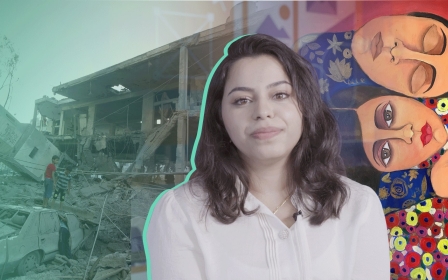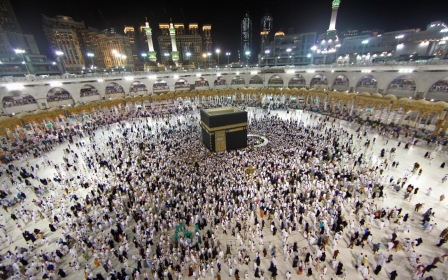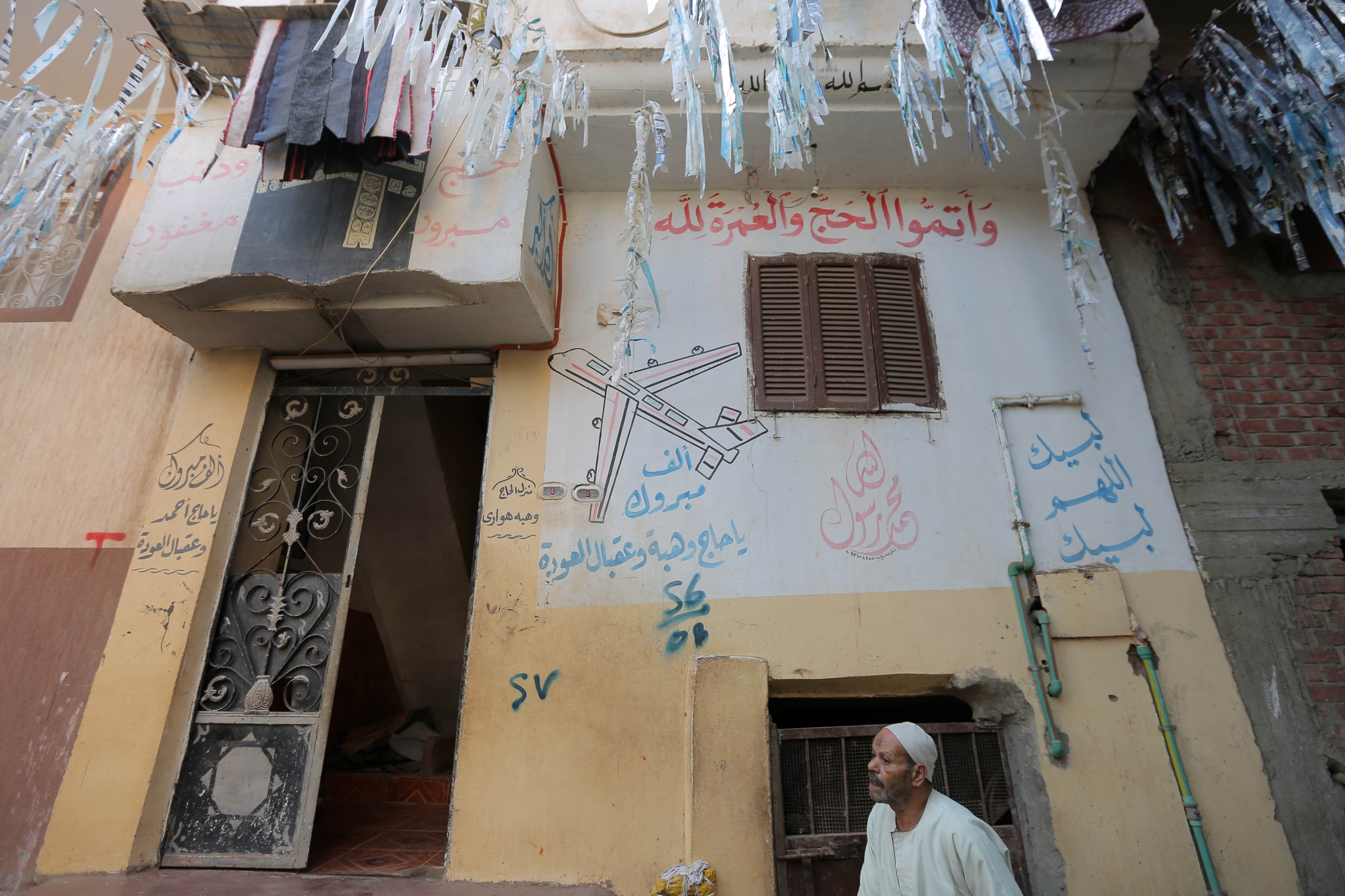
In pictures: Egypt's colourful and centuries-old tradition of Hajj and Umrah murals
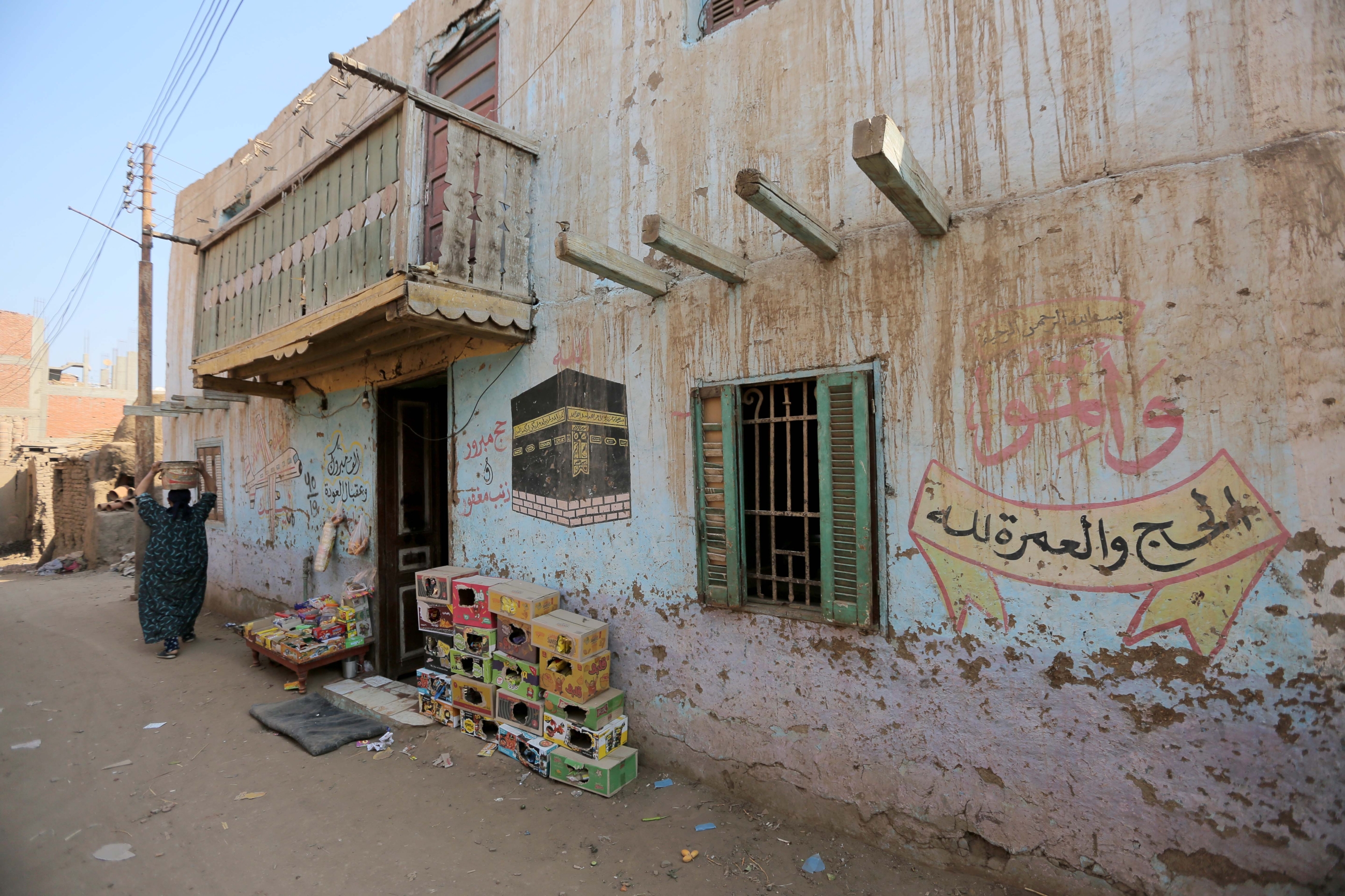
Injecting colour on the walls down narrow residential streets in Egypt are Hajj murals, a practice that has been carried out in the country for centuries.
The coloured paintings and Islamic supplications are celebratory markers that commemorate someone’s return from the Hajj or Umrah pilgrimages to Mecca, Saudi Arabia.
The Hajj pilgrimage is considered by many Muslims around the world as a lifetime goal and is obligatory for all Muslims who are healthy and able to afford to go on it.
The pilgrimage is believed to wipe a person’s sins away, and allow them to reconnect with their faith on a deeper level. (All photos by Fadel Dawod)

The murals, which are usually painted by family members or friends, are produced using bright and vibrant colours and often depict the holy sites in Mecca, or landscapes in Saudi Arabia.
Some will show camels, palm trees, or the Kaaba, the cube structure at the centre of the Masjid al-Haram, which Muslim pilgrims circle around.
Before photography was available the murals were seen as a key way of depicting the journey to Saudi Arabia.
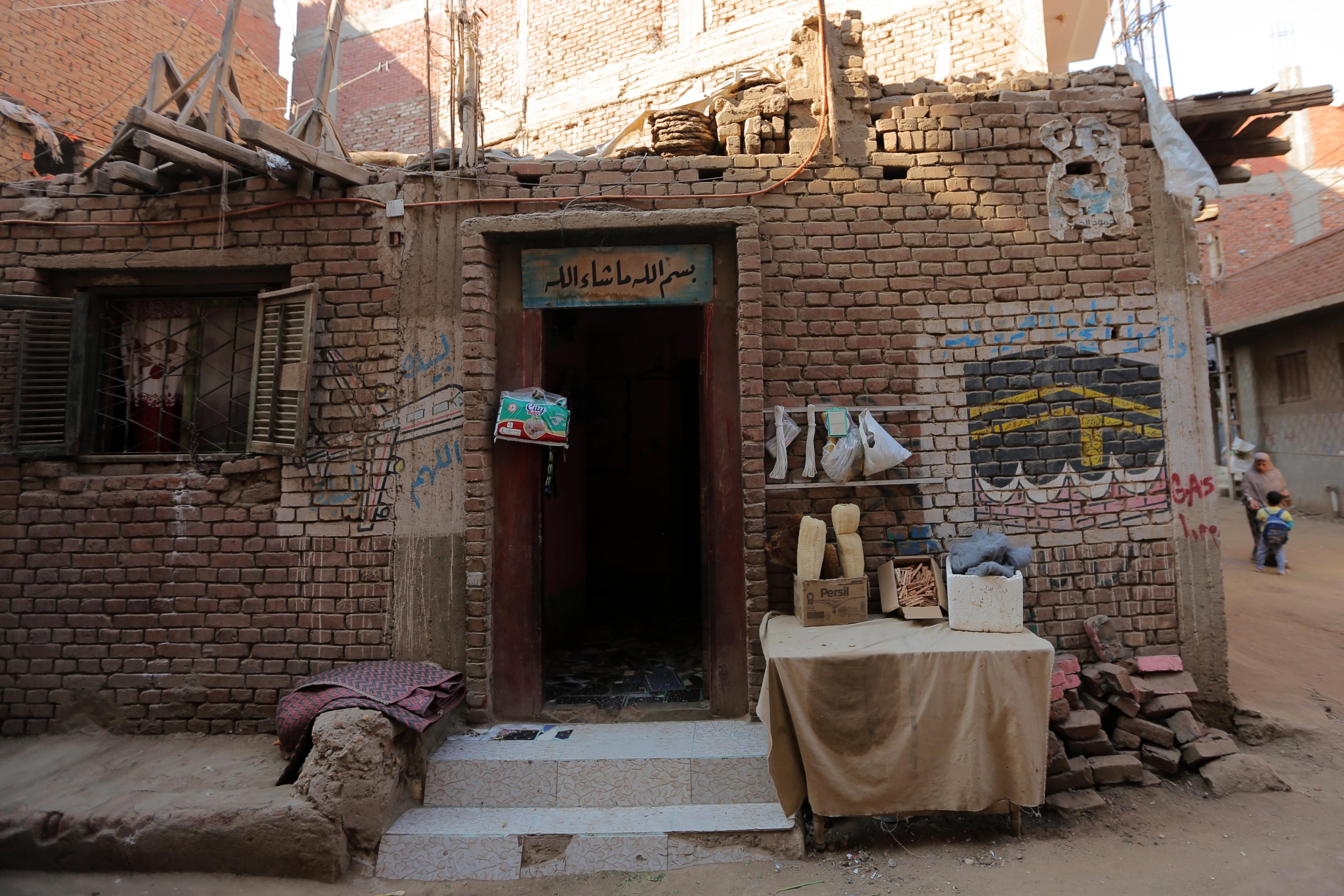
The murals are seen as more than just colourful paintings on residents’ homes, and they represent the identity of the local area and the people who live there.
They are also symbolic of the camaraderie between local residents in the area, showing their happiness that someone was able to complete a religious duty. Often the paintings include good wishes written out in calligraphy that congratulate the traveller, alongside prayers that their pilgrimage is accepted.
The traditional paint used is made from a mix of simple ingredients, such as paint, vinegar, rosewater, Arabic gum, and glue. The paintings usually take a few hours to complete.
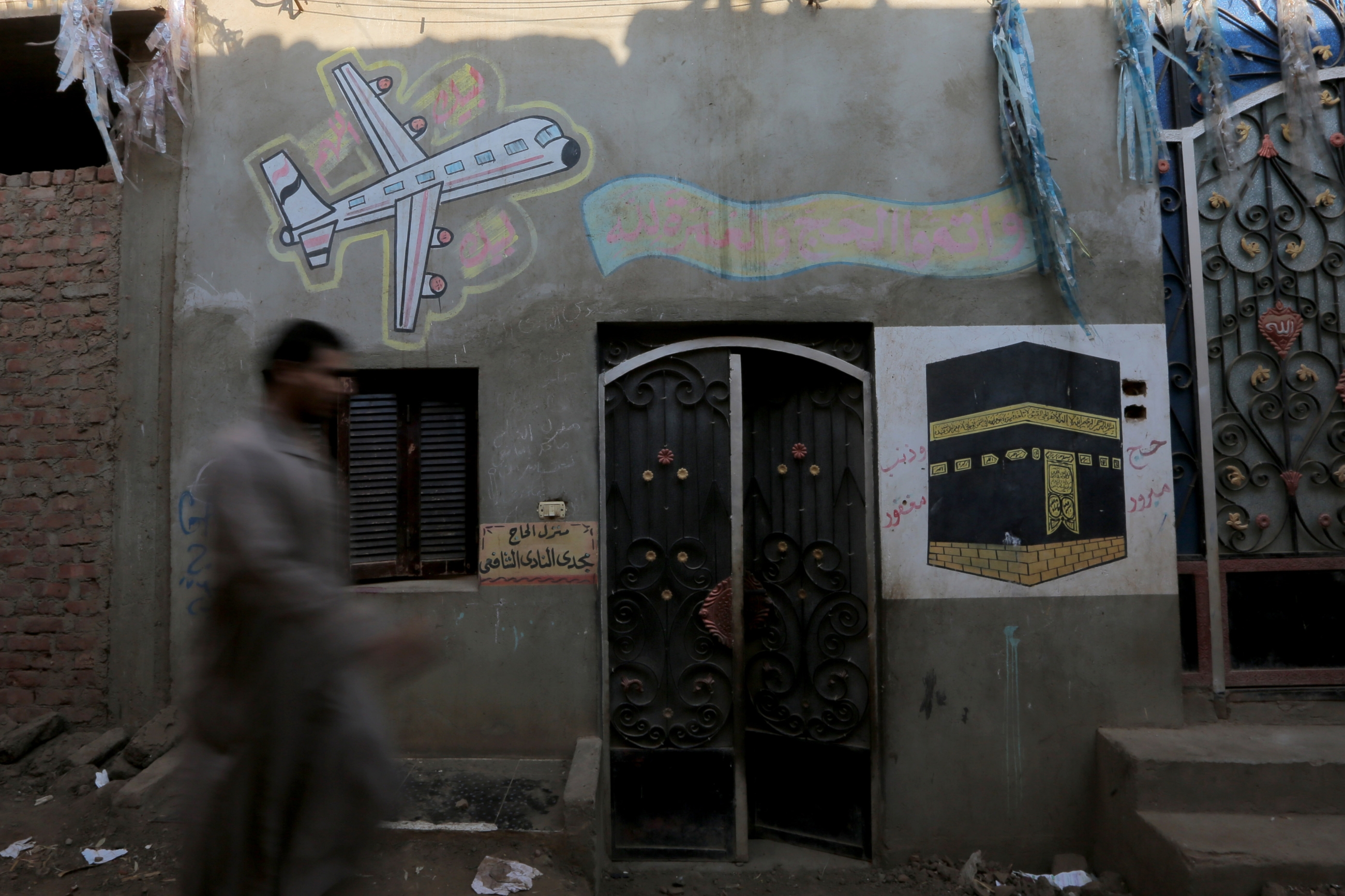
The murals have been painted in Egypt since the 18th century. They are usually not formally planned or co-ordinated, and instead, neighbours would gather together before the pilgrim’s arrival home and start painting the exterior walls of their apartment block or a nearby wall.
In some villages, the neighbours meet the pilgrim in a procession and lead them home.
Often, family members will prepare traditional sweets and tea as a celebration for the returning pilgrim.
Many Muslims believe that completing Hajj brings with it significant baraka, Arabic for "blessings", and the murals suggest that the area or home is filled with these blessings.

Upon a pilgrim's return from Hajj, they are given a new title by friends and family in the community.
For men this is "Hajj", and for women it’s "Hajja", followed by their name. The title brings with it great respect.
Some of the murals are verses from the Quran, which immediately signify to passers-by that someone in the neighbourhood has completed the pilgrimage. Many of the Quranic verses reference God’s mercy or are verses related to God prescribing the pilgrimage for people.

It is common to have a mural that says “may your Hajj be accepted, efforts be appreciated, and sins forgiven,” in Arabic.
Some of the murals have the pilgrim's name included making it a more personal celebration. When that person is seen around in the days after their arrival, anyone passing by them will congratulate them on their return and for completing the pilgrimage, having known about it from the mural.
For the pilgrim returning home, being welcomed with murals and sweet treats is a much-appreciated celebration.
Typically, those returning from Saudi Arabia from a pilgrimage come back with Zamzam water (holy water), dates, and gifts for family and friends.
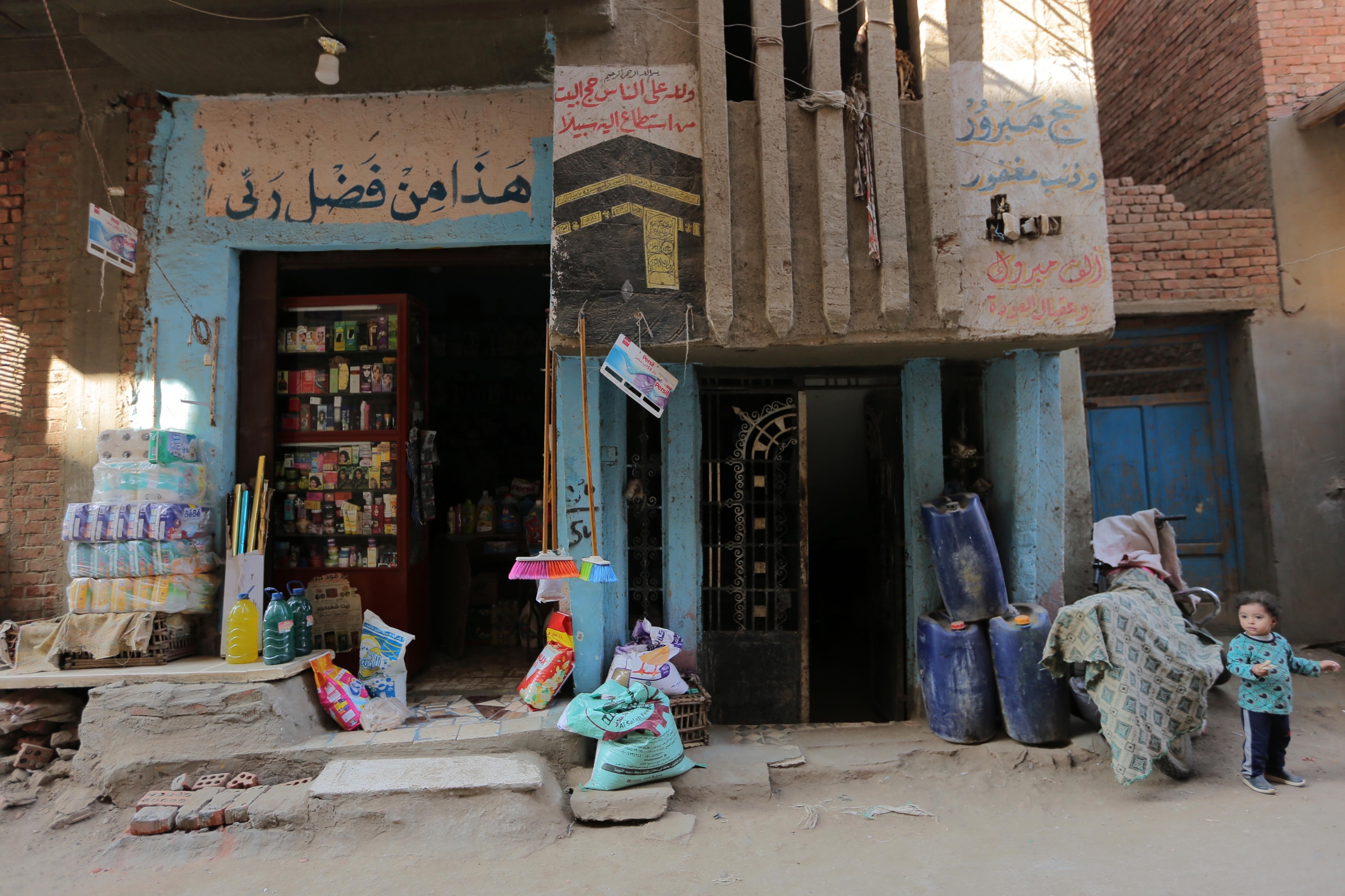
Traditionally, the journey from Egypt all the way to Saudi Arabia was long, difficult, and at some times considered unsafe. Because of this, the murals not only commemorated the person completing the pilgrimage but also their safe return home.
Today, although the journey is much easier and is mostly done by plane, it is still considered long for many, and even securing the necessary visa is not always straightforward.
The tradition of painting Hajj and Umrah murals has declined in recent years although it remains popular in the remote villages of Upper Egypt.
This article is available in French on Middle East Eye French edition.
Middle East Eye propose une couverture et une analyse indépendantes et incomparables du Moyen-Orient, de l’Afrique du Nord et d’autres régions du monde. Pour en savoir plus sur la reprise de ce contenu et les frais qui s’appliquent, veuillez remplir ce formulaire [en anglais]. Pour en savoir plus sur MEE, cliquez ici [en anglais].


